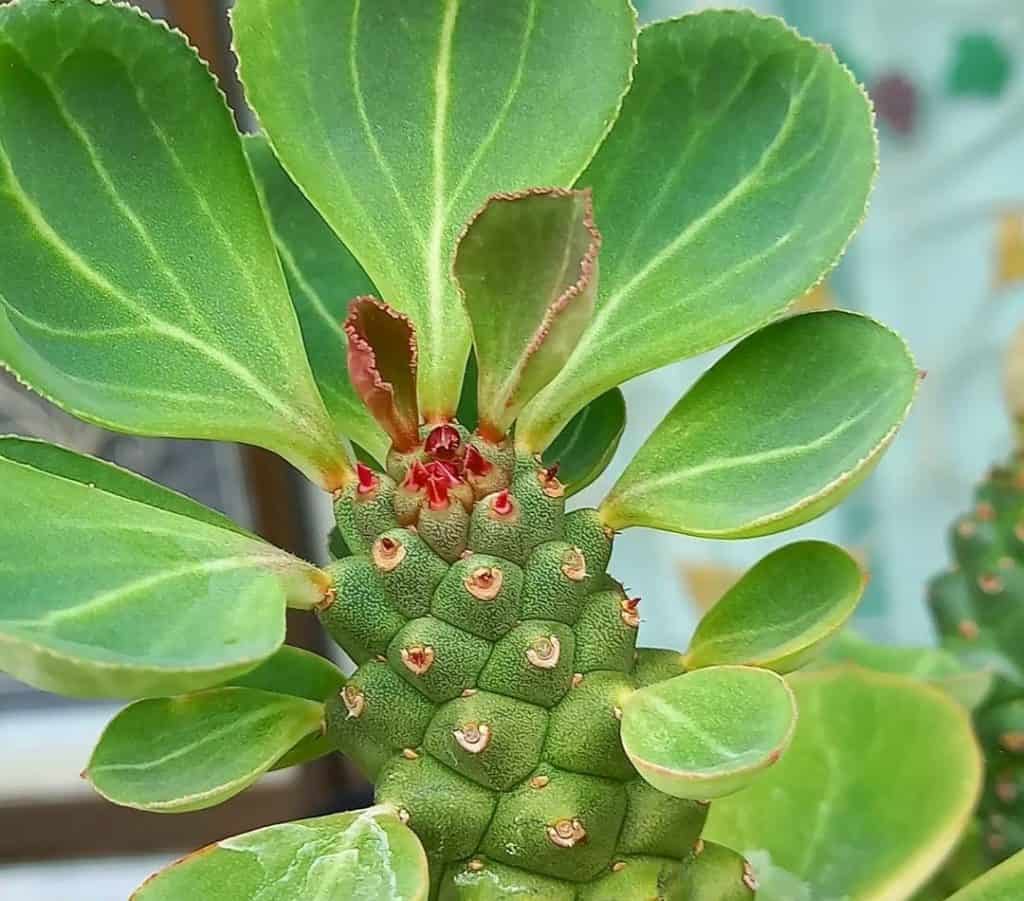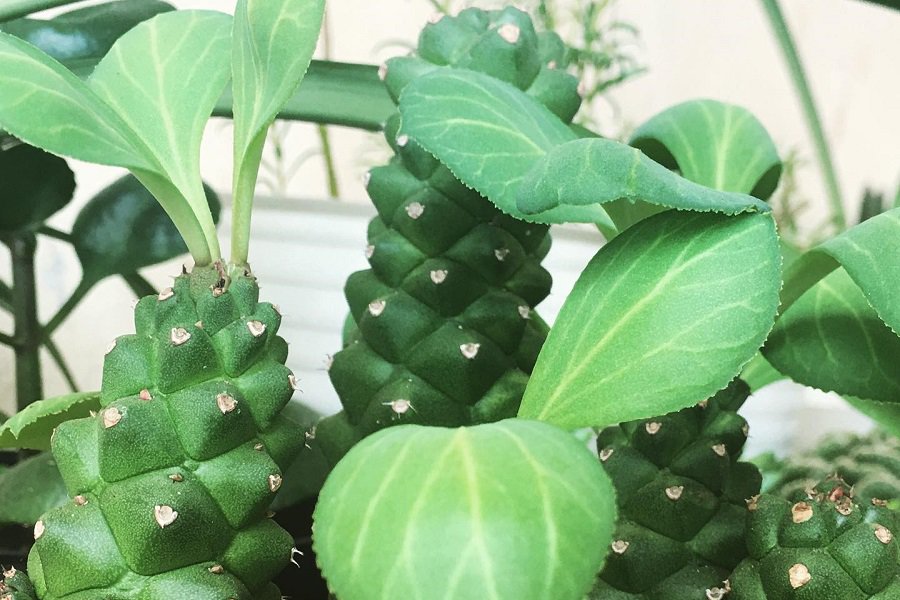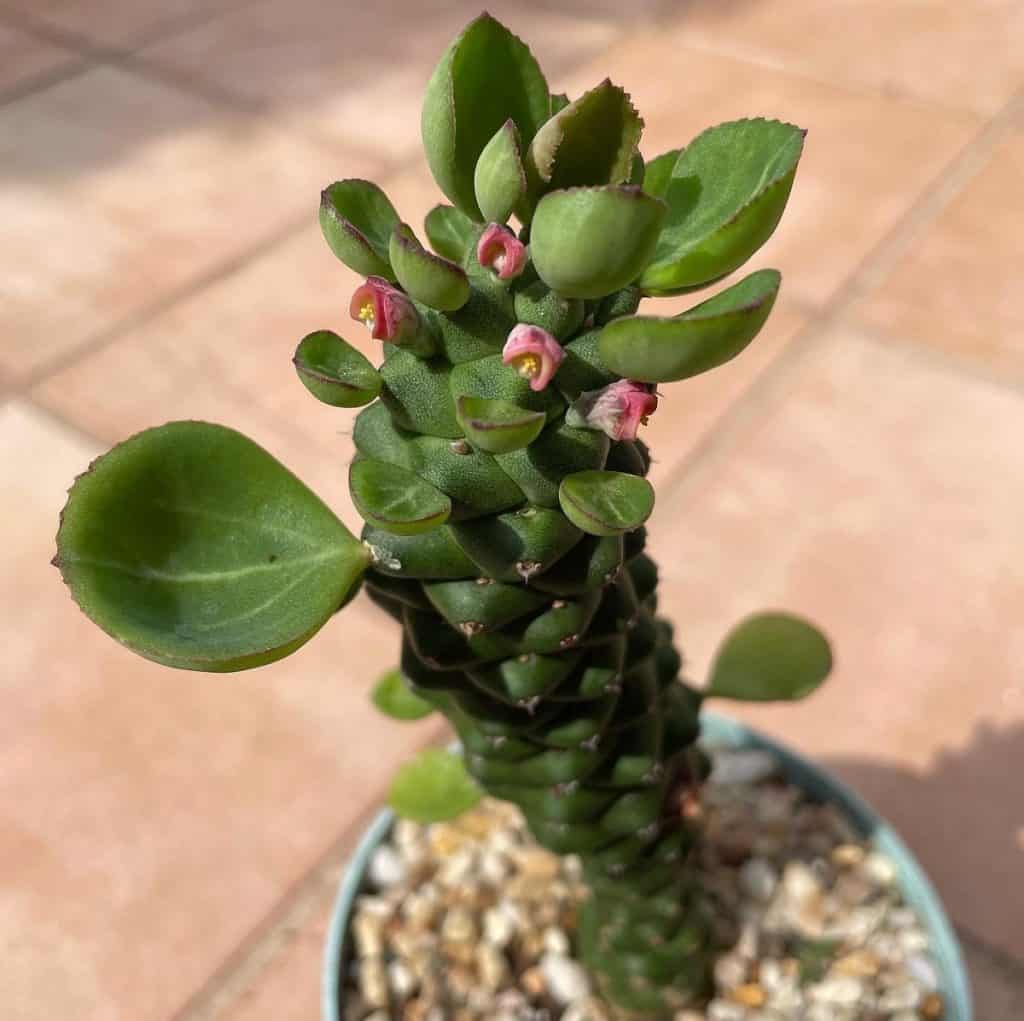Monadenium ritchiei: Characteristics and Care
Monadenium ritchiei, also known as Euphorbia ritchiei, is a unique and captivating succulent plant that will leave you mesmerized. Imagine a plant with thick, cylindrical stems adorned with eye-catching tubercles and spines, creating a visually striking display. But that’s not all – this extraordinary species also boasts large, vibrant green leaves and stunning pink flowers called cyathia.
Picture this: a two-foot-tall plant that looks like it came straight out of a sci-fi movie, with its otherworldly appearance and intricate details. Native to Mexico and Kenya, this rare gem of the Euphorbiaceae family is sure to become the star of your plant collection. Prepare to be captivated by its charm and uniqueness as you embark on a journey to learn more about this remarkable plant.

Related Post:
1,000 Types Of Succulents With Pictures
Contents
Monadenium ritchiei Care
Light
These plants thrive in full sun, requiring at least 6 hours of direct sunlight daily. However, they may need protection from intense afternoon sun, depending on the strength of the sun in your region. Watch for signs of sunburn or yellowing leaves, which indicate too much sun exposure. Typically, they grow well when planted outdoors in a sunny spot.
If grown indoors, place them near a south-facing window that receives ample sunlight throughout the day. Alternatively, invest in a good grow light designed for succulents to mimic natural sunlight.

Water
During their active growth period from spring to fall, ensure the top 4-5 inches of soil never dry out completely. Check the soil weekly and water when the top couple of inches feel dry. These drought-tolerant plants, native to semi-arid and rocky regions, can go a week or more without water.
Avoid letting the soil become overly dry and crispy. Your worst-case scenario should be watering once a month.
Water in the morning, allowing the plants to utilize the moisture throughout the day. In winter, reduce watering and only water when the plant shows signs of wilting.
Soil
Monadenium ritchiei thrives in well-draining, sandy soil mixed with pumice, perlite, peat, or river sand. You can also use a fast-draining succulent soil mix.
For potted plants, ensure the growing medium is airy and contains non-organic materials like lava grit, peat, clay, or pumice.
Despite their slow aerial growth, these succulents produce large rhizomatous roots. Repot every 2-3 years to ensure balanced development.
Fertilizer
These plants benefit from light fertilization. For young plants, add a small amount of organic fertilizer or compost to promote healthy growth.
Use a diluted liquid fertilizer during the spring and fall growing periods. Avoid fertilizing in winter when the plant is dormant.
For potted plants, fertilize more frequently than those grown in the ground. Yellow leaves at the bottom indicate a need for fertilization.

Temperature
In the United States, Monadenium ritchiei grows best in USDA Hardiness Zones 8b to 10b, with temperatures ranging from 60°F to 85°F (16°C-29°C).
Originating from Africa, these succulents dislike cold and cannot tolerate freezing temperatures. During winter, keep them indoors or in a heated greenhouse to protect them from the cold.
Pests and Diseases
Monadenium ritchiei succulents are generally resilient to pests and diseases. However, overwatering, especially in winter, can lead to rot. Low light conditions may attract scale insects and mealybugs.
Monadenium ritchiei Propagation
Propagating Monadenium ritchiei is easiest and fastest from cuttings. To propagate:
- Take a cutting from a healthy plant and allow it to callus over.
- Prepare a well-draining potting mix or succulent soil.
- Plant the calloused cutting in the prepared soil.
- Water sparingly until roots form.
- Maintain conditions as close to their natural habitat as possible.
You can also try growing from seeds, but propagation from seeds is more challenging.
Monadenium ritchiei has a moderate growth rate and will become quite large in 3-5 years.
